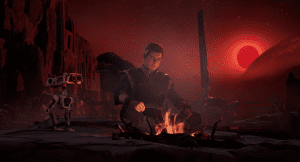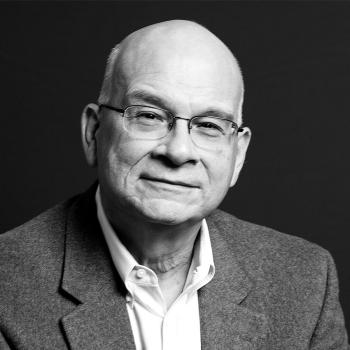
As a general rule, most right-of-center theological and political commentators don’t think very much of video games. Such thinkers tend to link modern gaming with the downfall of young men, characterizing such recreation (along with online pornography) as a dopamine-triggering substitute for genuine accomplishment. I’ve long thought this is an unfortunately facile take, one that contains elements of truth but that also tends to undervalue the genuine power of participatory storytelling (but that’s a subject for another time).
In any event, on the cusp of yet another coronavirus crackdown, I managed (somehow) to get my hands on a new Xbox Series X console, and immediately decided to try out the 2019 hit Star Wars Jedi: Fallen Order. My interest was slightly more than strictly recreational: the Star Wars franchise has always been fraught with metaphysical significance—what other sci-fi saga foregrounds something as mystical as the “Force”?—and Fallen Order is, happily, no exception to that rule.
Set between Revenge of the Sith and A New Hope, in the midst of a brutal persecution of Jedi by the Galactic Empire, Fallen Order traces the journey of young Jedi survivor Cal Kestis. As the story unfolds, Cal’s quest comes to focus on a “holocron,” a kind of information storage device that has recorded the locations of numerous Force-sensitive children capable of being trained to become Jedi themselves. For a hotheaded young rebel like Cal, the holocron offers the potential for rebuilding the decimated Jedi Order and mounting a full-on challenge to the oppressive Empire. But for the Empire, of course, the holocron is none other than a list of assassination targets.
Towards the game’s end, with the holocron in reach, Cal is struck by a haunting vision in which the nascent Jedi Academy that Cal once envisioned as a site of resistance—a fulcrum of galactic history!—becomes merely a killing ground for the Empire. And it is this possibility that leads him to take a drastic step: once the ancient holocron is finally in his possession, Cal destroys it, denying its secrets to the Empire and simultaneously sacrificing his dreams of presiding over a reborn Jedi Order. Of the Force-sensitive children, Cal admits simply that “[t]heir destiny should be trusted to the Force.”
At bottom, Fallen Order dares to engage a question the franchise has historically shied away from confronting: what if reckless courage isn’t always the best answer to seemingly dire circumstances? For what it’s worth, it seems to me that the dilemma facing Cal is eerily akin to the situation in which a theologically traditionalist American Christianity finds itself. Confronted with a culture that increasingly finds the faith’s central claims unintelligible, Christians find that two paths present themselves. One may claw for what sources of power remain available, in hopes of displacing a perceived woke-capitalist imperium that would like to consign premodern tradition to history’s dustbin. Or, alternatively, one may acknowledge that there are circumstances in which the cardinal virtue of prudence demands not audacity, but trust.
It may trigger eye-rolls to invoke Rod Dreher’s “Benedict Option” here, but the analogy is unusually apt. The original trilogy of films chronicles the preservation and passing-on of the Jedi tradition amidst profoundly grim, quasi-monastic circumstances. And in the end, as it happens, it is not a reborn Jedi Order that brings the Empire to its knees. The final crisis is triggered by the unwillingness of Luke Skywalker to embrace the dark side and do what must be done to physically prevail (an act that is, paradoxically, mirrored at the climax of Robert Hugh Benson’s Catholic sci-fi novel The Dawn of All—and that brings about the final restoration of world civilization).
In the midst of deepening turmoil, that vision may be impossible to glimpse. The hour may call for something like “radical hope” in the face of seemingly insurmountable odds. But what Fallen Order suggests, provocatively, is that such hope may be the most urgent need of all.












